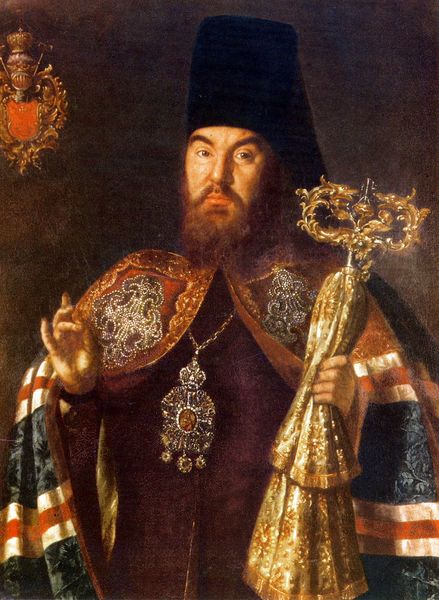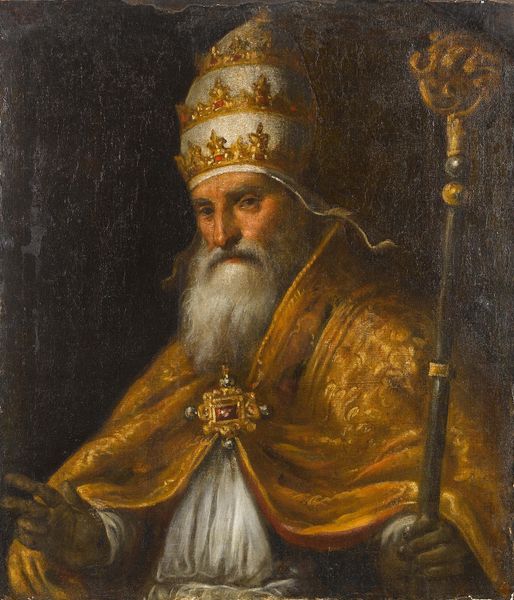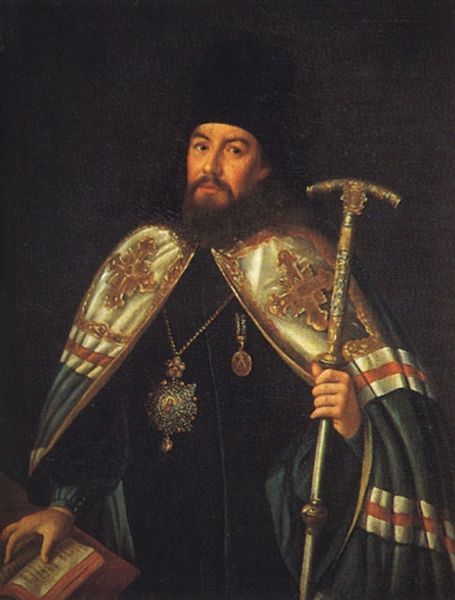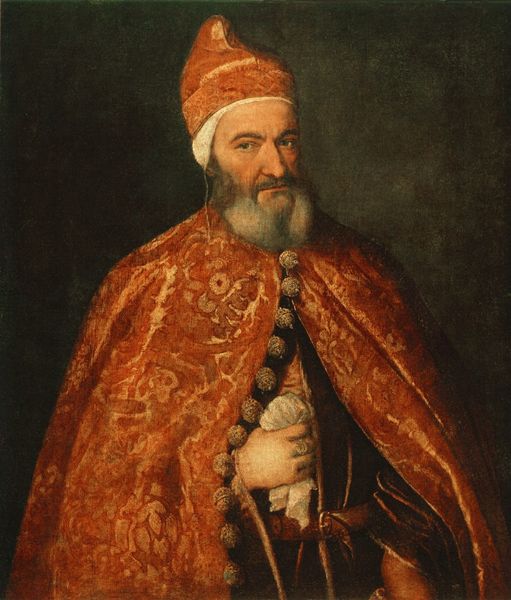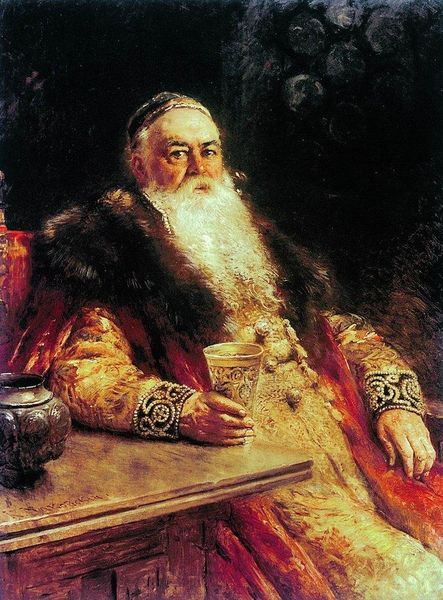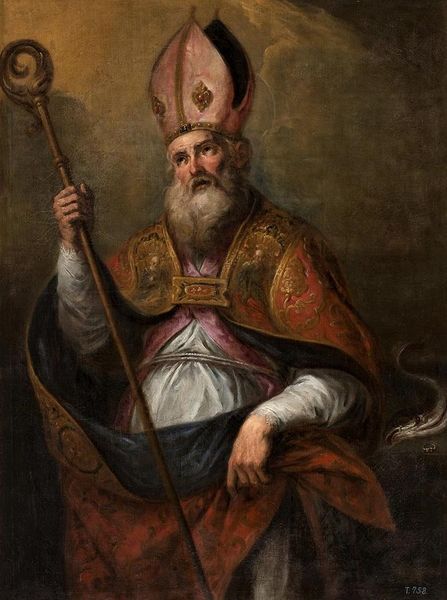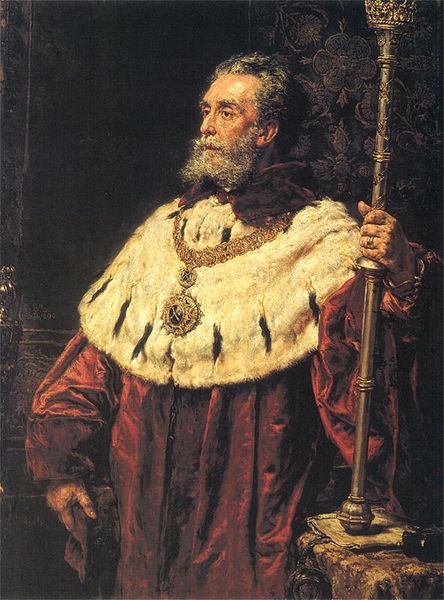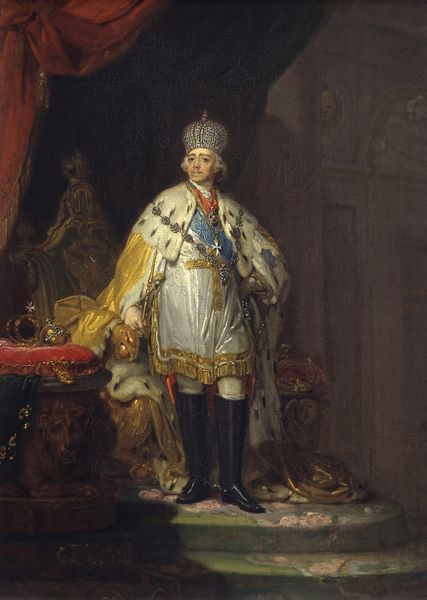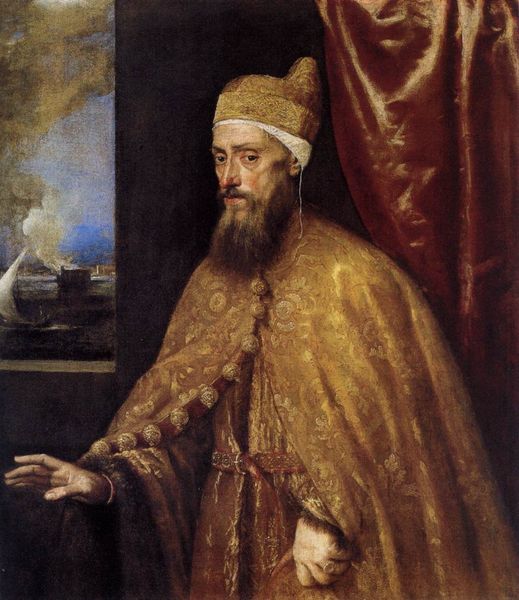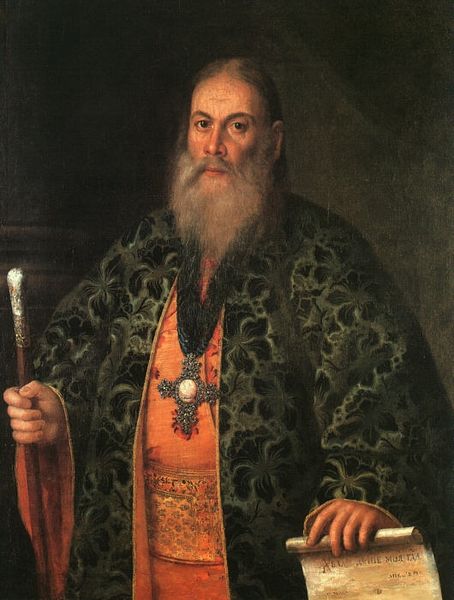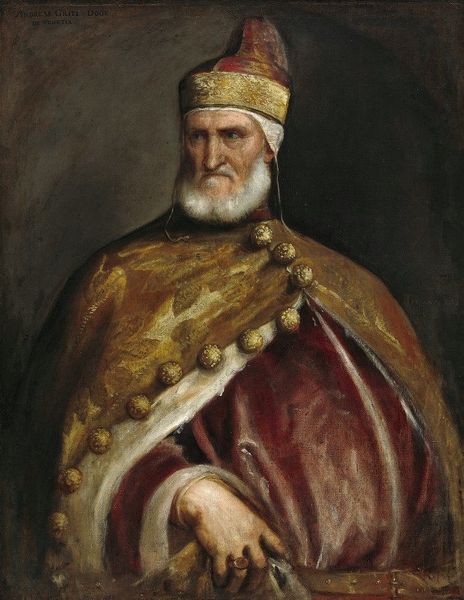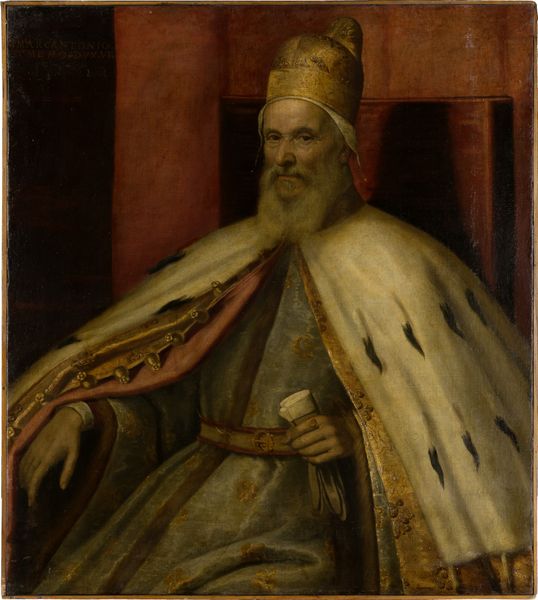
painting, oil-paint
#
portrait
#
gouache
#
painting
#
oil-paint
#
male-portraits
#
romanticism
#
russian-avant-garde
#
history-painting
#
academic-art
Copyright: Public domain
Editor: This is Vladimir Borovikovsky's "Bishop of the Russian Orthodox Church", an oil painting. I’m immediately struck by the bishop’s opulent garb and the artist's rendering of such luxurious fabrics. What can you tell me about it? Curator: Let's look closely at the material elements and their role here. The oil paint itself is a key factor; it allows for the rendering of light and shadow, giving depth to the rich textures. What do you think the sheer abundance of adornment signifies about power in this context? Editor: I guess it speaks to the church's wealth and status. All the symbols are carefully made of gold. But I wonder about the people involved in the *making* of the clothes and symbols that denote power; they're conspicuously absent in a painting about a powerful figure. Curator: Precisely! Consider the labor that went into creating the bishop's garments and the artifacts he holds. The embroidery, the metalwork, the very preparation of the oil paints – all point to a vast network of artisans and laborers whose skills and toil enabled this display of authority. Think of the economics surrounding even a single brooch! Editor: It hadn’t occurred to me to see this painting as the result of intense physical effort on the part of many people. Now that you mention the manual labour of creation, I begin to appreciate the image and Borovikovsky’s labour in a totally different light! Curator: And consider the distribution of materials. Where did the gold come from? Who mined it? How did that shape social relations? Looking beyond the single, glorified figure opens a whole realm of inquiry into production, consumption, and class relations. Editor: Thank you; I had approached this from a purely aesthetic viewpoint, but it's so much more than the surface details. Seeing it as a product of labour changes everything. Curator: Indeed! Understanding the materiality unlocks another level of understanding the culture of that time.
Comments
No comments
Be the first to comment and join the conversation on the ultimate creative platform.
